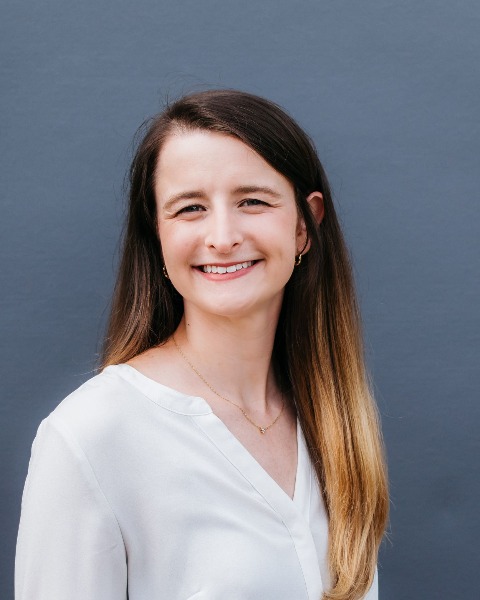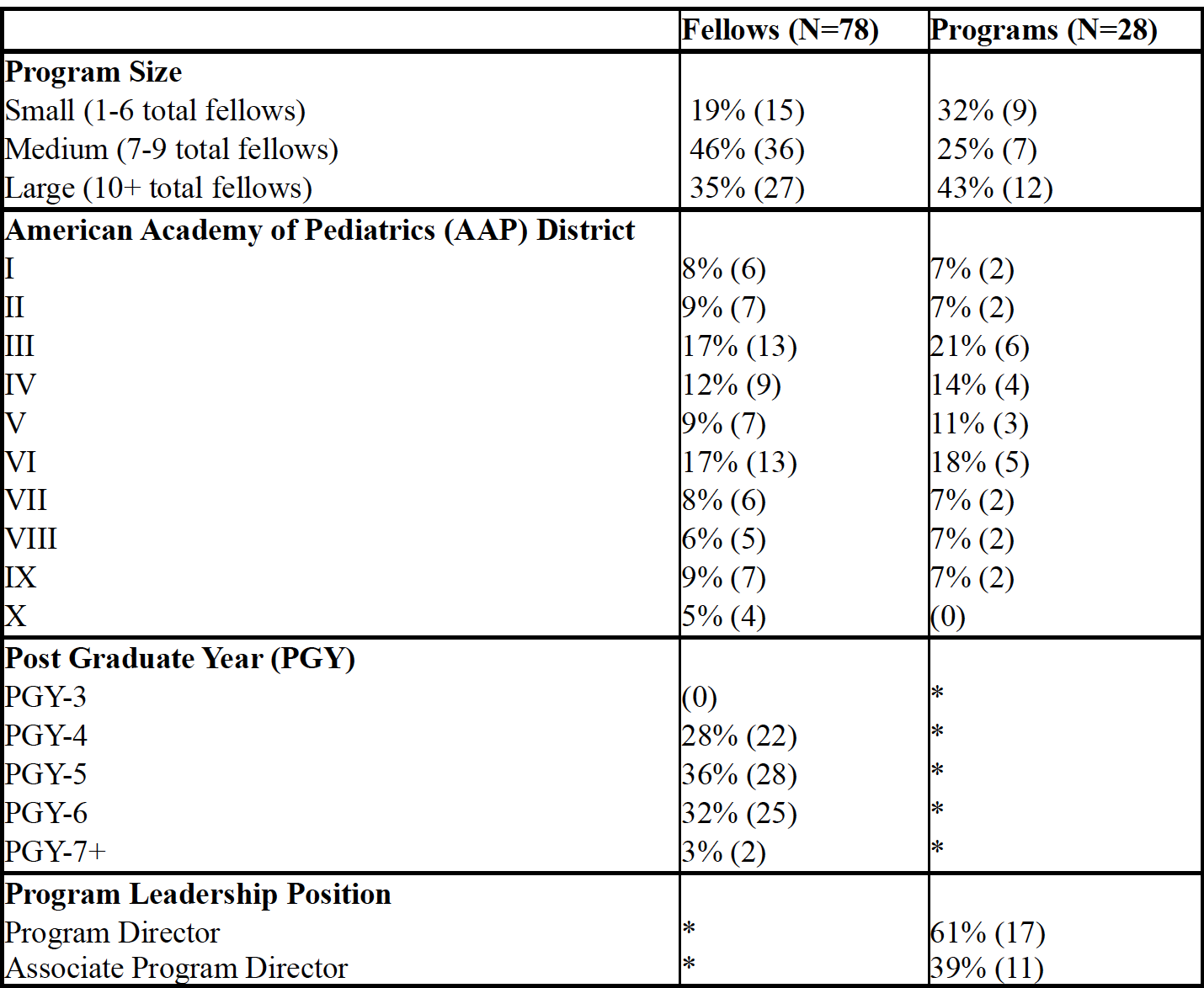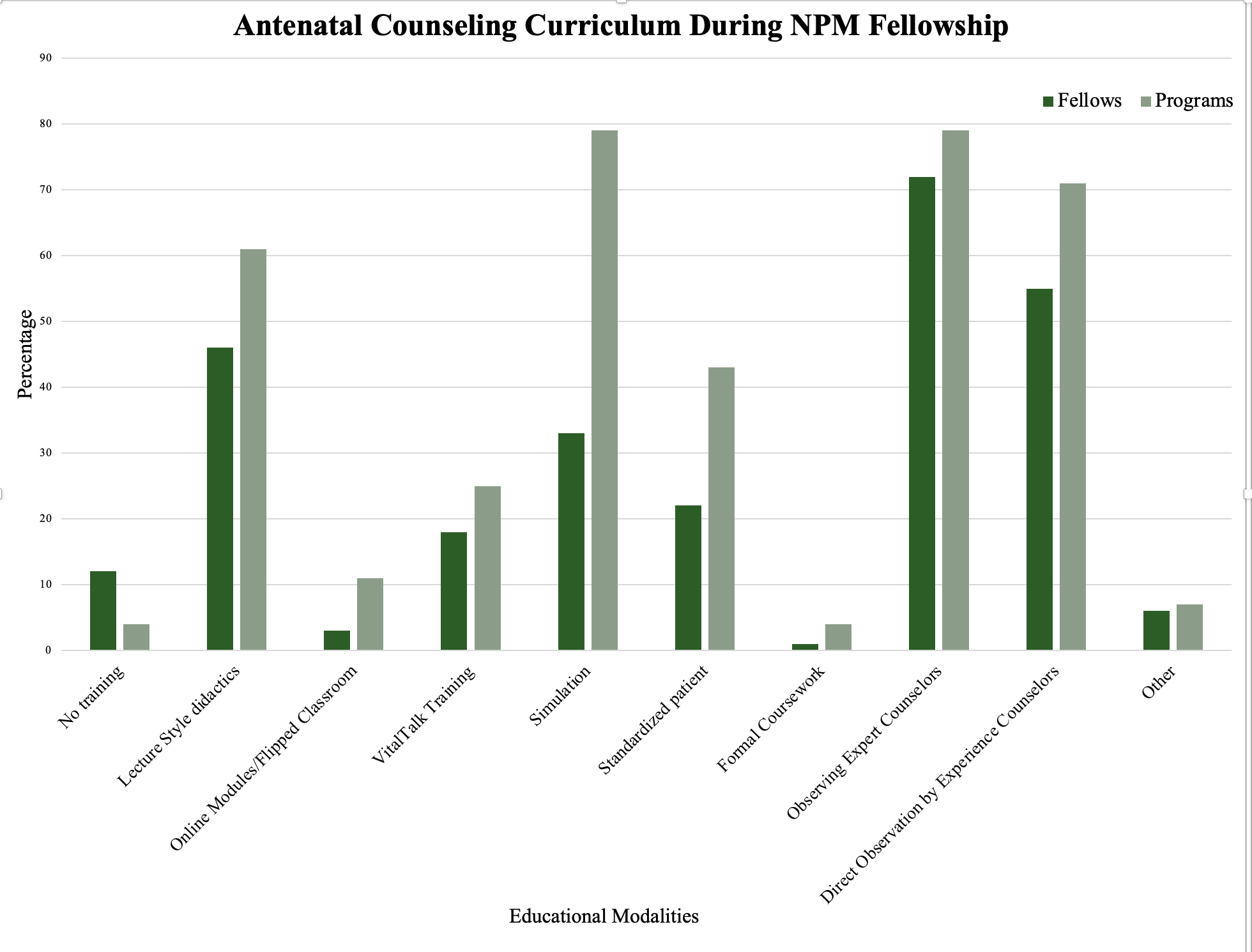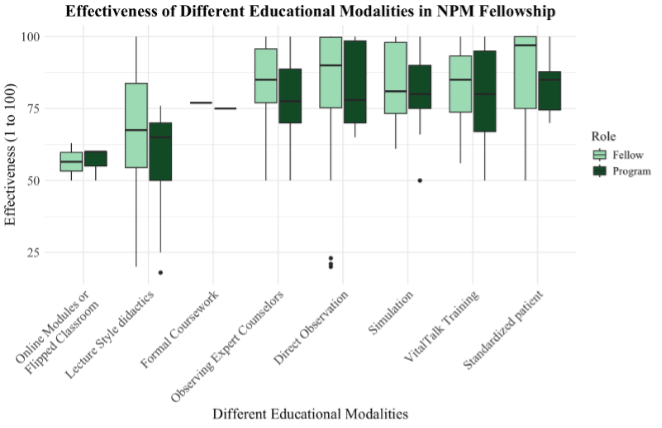Medical Education 13: Potpourri
Session: Medical Education 13: Potpourri
270 - Evaluating National Neonatal-Perinatal Medicine Fellowship Antenatal Counseling Education Practices
Monday, April 28, 2025
7:00am - 9:15am HST
Publication Number: 270.4672
Michelle J. Bartlett, Childrens Hospital of Philadelphia, Philadelphia, PA, United States; Mackenzie Frost, Childrens Hospital of Philadelphia, Ardmore, PA, United States; Kesi Yang, Perelman School of Medicine at the University of Pennsylvania, Wallingford, PA, United States

Michelle Bartlett, MD, MS (she/her/hers)
Fellow Physician
Childrens Hospital of Philadelphia
Philadelphia, Pennsylvania, United States
Presenting Author(s)
Background: Antenatal counseling (AC) for parents expecting preterm delivery is crucial in neonatal-perinatal medicine (NPM) for building rapport and aligning with family goals. However, many providers use scripted communication that may not meet family needs, highlighting the necessity for standardized, family-centered education for trainees. NPM fellows have reported gaps in training related to communication and shared decision-making, and there is limited literature on current teaching methods. Although the Accreditation Council for Graduate Medical Education has revised evaluation milestones focusing on family-centered communication and delivering serious news, guidance on standardized assessment of AC skills remains lacking. To develop effective training programs, we need to evaluate how AC is currently being taught and assessed.
Objective: Assess the national landscape via an environmental scan of AC curriculum to establish a baseline of current educational practices, elucidate currently effective training modalities, and identify areas for improvement.
Design/Methods: Survey was developed based upon literature review and expert collaboration with pilot testing performed on a subset of program leadership and fellows. They were distributed nationally via email listserv to NPM fellows and program leadership in the fall of 2024, with one reminder. The survey included select-all, multiple-choice, Likert-scale questions, and free-response items.
Results: Twenty-seven percent of programs (28/102) and 10% of fellows (78/815) completed the survey, representing a wide range of locations and programs (Table 1). A variety of educational modalities are used to teach AC (Figure 1); nine fellows and one program reported having no formal training. Program leadership was more likely than fellows to consider their overall education very effective (54% vs. 33%, respectively), though perceived effectiveness varied based on the educational modality (Figure 2). Over 80% of fellows expressed a desire for more training. Most programs (86%) lack a formal evaluation mechanism. Only 36% of fellows reported being observed more than three times during their fellowship, while 74% noted they typically perform four or more consults per month while on service.
Conclusion(s): While diverse educational modalities are employed in AC training, fellows desire more training and are less likely than program leaders to believe their current education is effective. The lack of observation and formal evaluation of AC skills across programs indicates an opportunity for improvement. This data will inform curricular design and program assessment.
Table 1. Demographic data from survey participants.
 * Denotes not applicable. AAP districts in the United States are as follows: District I (Connecticut, Maine, Massachusetts, New Hampshire, Rhode Island, Uniformed Serv East, Vermont) District II (New York 1 (upstate), New York 2, New York 3 (New York City)) District III (Delaware, District of Columbia, Maryland, New Jersey, Pennsylvania, West Virginia) District IV (Kentucky, North Carolina, South Carolina, Tennessee, Virginia) District V (Indiana, Michigan, Ohio) District VI (Illinois, Iowa, Kansas, Minnesota, Missouri, Nebraska, North Dakota, South Dakota, Wisconsin) District VII (Arkansas, Louisiana, Mississippi, Oklahoma, Texas) District VIII (Alaska, Arizona, Colorado, Hawaii, Idaho, Montana, Nevada, New Mexico, Oregon, Uniformed Serv West, Utah, Washington, Wyoming) District IX (California 1 (SF), California 2 (LA), California 3 (SD), California 4 (Orange)) District X (Alabama, Florida, Georgia, Puerto Rico).
* Denotes not applicable. AAP districts in the United States are as follows: District I (Connecticut, Maine, Massachusetts, New Hampshire, Rhode Island, Uniformed Serv East, Vermont) District II (New York 1 (upstate), New York 2, New York 3 (New York City)) District III (Delaware, District of Columbia, Maryland, New Jersey, Pennsylvania, West Virginia) District IV (Kentucky, North Carolina, South Carolina, Tennessee, Virginia) District V (Indiana, Michigan, Ohio) District VI (Illinois, Iowa, Kansas, Minnesota, Missouri, Nebraska, North Dakota, South Dakota, Wisconsin) District VII (Arkansas, Louisiana, Mississippi, Oklahoma, Texas) District VIII (Alaska, Arizona, Colorado, Hawaii, Idaho, Montana, Nevada, New Mexico, Oregon, Uniformed Serv West, Utah, Washington, Wyoming) District IX (California 1 (SF), California 2 (LA), California 3 (SD), California 4 (Orange)) District X (Alabama, Florida, Georgia, Puerto Rico). Figure 1. Distribution of educational modalities reported in NPM fellowship.
 The other category included antenatal consultation rotations, incorporation into first year bootcamps, and performing counseling without an attending present.
The other category included antenatal consultation rotations, incorporation into first year bootcamps, and performing counseling without an attending present. Figure 2. Box and whisker plot of effectiveness of teaching methods for antenatal counseling.
 This plot displays the distribution of effectiveness ratings for various teaching methods based on a sliding scale of 1 to 100, with higher numbers indicating more effective. Notable outliers suggests variability in perceived effectiveness, emphasizing the need for tailored teaching approaches to enhance antenatal counseling skills.
This plot displays the distribution of effectiveness ratings for various teaching methods based on a sliding scale of 1 to 100, with higher numbers indicating more effective. Notable outliers suggests variability in perceived effectiveness, emphasizing the need for tailored teaching approaches to enhance antenatal counseling skills. 
